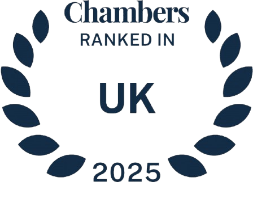Proposals for UK Immigration Reform
Although the full policy package has not yet been published, several key themes have emerged from recent developments, briefings and ministerial statements.
Mahmood reportedly dispatched senior Home Office officials to Denmark last month, under instruction to examine the Danish approach to border management, refugee protection and family reunion, with an emphasis on deterrence and control. They have been reviewing how Denmark reduced asylum claims and grants to multi-decade lows, alongside increased returns activity, while maintaining compliance with international law obligations under the European Convention on Human Rights.
Under the Danish model, refugees are typically given short-term residence permits rather than permanent protection. Renewal depends on continued risk in their country of origin and evidence of integration, such as employment and language acquisition. Mahmood is understood to favour a similar principle in the UK.
Another area under consideration is family reunion. Denmark restricts family reunion to refugees and sponsors aged 24 or over, and requires the Danish partner to have been financially independent for at least three years. A financial guarantee must also be lodged, and both parties must meet language and integration conditions. While the UK is not expected to mirror these requirements directly, it is likely that forthcoming rules will tighten eligibility, particularly for those with temporary or humanitarian status.
The Home Office is also studying Danish practices around enforcement and returns, including voluntary repatriation schemes and stricter thresholds for expulsion following criminal convictions. There is no suggestion that the UK will adopt Denmark’s policy of financial incentives for voluntary return, but ministers are expected to strengthen removal mechanisms and review the balance between appeal rights and deportation powers.
The Home Office’s interest in the Danish system comes at a time of sustained public and political pressure over migration levels and border control. The Labour Government has made reducing irregular migration a priority, following record Channel crossing figures and criticism of the asylum backlog inherited from previous administrations.
In her party conference address, Shabana Mahmood pledged to “do whatever it takes” to restore confidence in the UK’s immigration and asylum framework. Since taking office, she has ordered a full review of the Refugee Family Reunion policy, and has continued the temporary suspension of new applications brought in by her predecessor Yvette Cooper, pending revised guidance. The new approach is expected to align family reunion more closely with integration outcomes and the applicant’s status, echoing Denmark’s conditional model.
The Home Secretary has also indicated plans to extend the qualifying period for indefinite leave to remain from five to ten years in certain protection categories, reflecting a growing policy trend toward using temporary status as a tool for control and as a test of contribution and compliance before granting permanence.
The UK has already seen incremental movement in this direction through measures such as curtailed temporary routes, stricter English language requirements and the expansion of inadmissibility provisions for asylum claims linked to safe third countries. The government’s renewed interest in Danish-style deterrents signals an intention to formalise that shift into a formal framework combining stricter conditions with faster removals.
Denmark Immigration System Overview
Denmark’s immigration system is built on a framework of conditional protection and firm integration expectations. It combines temporary residence models for refugees with strict eligibility criteria for family reunification, settlement and citizenship. The guiding principle is that protection is offered while it remains necessary, not as a pathway to permanent residence.
Refugees granted protection are usually issued temporary residence permits of one to two years, renewable only if the Danish authorities determine that conditions in their home country remain unsafe. When a country is deemed safe, Denmark has the power to withdraw or refuse renewal of protection, even where the individual has been resident for several years. This has resulted in the non-renewal of hundreds of Syrian refugees’ residence permits following the Danish government’s assessment that parts of Syria were safe for return.
For settlement, Denmark applies an extended qualifying period and demands active integration. Applicants need to demonstrate long-term employment, Danish language proficiency, and absence of criminal convictions. Family reunion is similarly conditional. Both partners must be aged 24 or over, the Danish-based partner must not have relied on state benefits for three years, a financial bond must be paid, and both must pass a language test.
A further feature of the Danish model is the concept of “parallel societies”. Individuals living in designated areas where more than half of residents are from what the government defines as non-Western backgrounds can face additional restrictions, including limits on family reunion eligibility. This policy, designed to promote integration and social cohesion, has been criticised within the EU for potential discrimination concerns.
Denmark’s Social Democratic government argues that these measures have strengthened public confidence in immigration control and reduced asylum claims to their lowest levels in four decades. While controversial, the system’s emphasis on contribution, compliance, and return has become central to the country’s political consensus on migration.
UK and Danish Immigration Systems: How Different Are They?
Emulating Denmark would represent a significant structural shift for the UK, rather than a minor policy adjustment. While both systems are grounded in international obligations under the Refugee Convention and the European Convention on Human Rights, their practical operation and underlying philosophy differ sharply. The UK model has traditionally treated refugee protection as a pathway to permanence, with family reunion and settlement forming part of long-term integration policy. Denmark, in contrast, treats protection as temporary and conditional, linking renewal and family rights to contribution, language and social cohesion.
The UK immigration system operates under the Immigration Rules, which govern all routes for work, study, family and protection. It distinguishes between temporary and permanent status, with most routes leading to indefinite leave to remain (ILR) after five years’ lawful residence. The rules have been substantially reshaped over recent years to balance economic migration with border control and to manage asylum pressures through eligibility and procedural reform.
The UK’s asylum process is grounded in the Refugee Convention and the European Convention on Human Rights. Successful applicants are usually granted refugee status or humanitarian protection for an initial five-year period, after which they can apply for ILR. While refugee family reunion rights are protected under the current rules, the scheme has been temporarily suspended since September 2025 pending new regulations.
In contrast to Denmark’s more prescriptive approach to integration, the UK relies primarily on compliance mechanisms and eligibility controls rather than cultural or geographic integration policies. However, recent Home Office policy developments show a clear shift toward conditionality and contribution. Applicants are increasingly expected to demonstrate self-sufficiency, English language skills and continuous employment to maintain or extend their leave.
The asylum and protection system remains under strain, with rising caseloads and ongoing issues in removals. The planned reforms influenced by Denmark indicate that future UK policy could move further away from automatic settlement and closer toward temporary protection models, conditional renewal and stricter reunification rules.
Aligning more closely with Denmark would therefore mark a move away from the UK’s current balance between humanitarian protection and integration, toward a framework that ties immigration outcomes more explicitly to conduct, employment and perceived contribution. It would place greater emphasis on deterrence and review, and less on automatic settlement or family unity.
For applicants and employers alike, this would mean a system more focused on ongoing eligibility and active compliance than on progression through fixed stages of immigration permission.
Implications of UK Alignment with the Danish Model
Moving toward a Danish-style framework would recast protection as provisional rather than a step toward permanence. Temporary status with periodic reviews increases the importance of country-of-origin assessments and individual risk evaluations. Renewal decisions would hinge on dynamic evidence about safety and on measurable integration factors such as language and work history. Applicants should expect closer scrutiny at each renewal point, with a greater evidential burden to avoid lapses in permission.
A shift to tighter family reunion rules would recalibrate Article 8 balancing exercises toward financial independence, language ability and contribution. Where the UK introduces age thresholds, benefit history checks, security bonds or added language requirements, expect a rise in documentary disputes and proportionality challenges. Any carve-outs for protection beneficiaries would need careful drafting to avoid indirect discrimination and to withstand judicial review.
Longer timelines before settlement, combined with temporary protection, would reduce automatic progression to ILR and increase reliance on Section 3C leave during renewals. That raises practical risks around work rights continuity, employer verification, and access to services. Interruptions in permission, even short ones, can create knock-on issues with right to work, right to rent and bank account checks. Clear transitional arrangements will be needed for those already on a five-year track.
Enforcement and returns policy aligned more closely with Denmark would place greater weight on removal pathways and voluntary return schemes. The legal test for deportation following criminality is unlikely to change at a fundamental level, but policy guidance could lower internal thresholds for pursuit, leading to more cases where Article 3 and Article 8 defences are tested. Case management will depend on efficient liaison with receiving states and timely travel documentation, areas that have historically constrained removals.
Operationally, a Danish-style approach increases the importance of integration outcomes. If renewal and family reunion decisions rely on employment, language, and community markers, government will need auditable metrics and consistent guidance for caseworkers. That creates new compliance points for applicants and scope for litigation over fairness, evidential standards, and margin of appreciation. Public law risk rises where rules or guidance move faster than the supporting infrastructure.
For the broader system, aligning with Denmark narrows pathways to permanence for protection cohorts and concentrates settlement on those meeting contribution tests over time. Skilled work routes remain unaffected in their core architecture, yet employers will still feel indirect effects where dependants, switching options, or documentation timelines intersect with tighter protection policies. Clear communication, predictable renewal windows, and accessible routes to correct errors will be vital to maintain confidence across the system.
Implications for UK Employers
For employers and legal practitioners, these developments are part of a broader recalibration of immigration control, where humanitarian routes are subject to greater conditionality while skilled migration policy continues to focus on economic contribution and labour market need. The forthcoming announcement will determine how these parallel priorities are reconciled in operational policy.
For employers, a shift toward a Danish-style immigration framework would not only alter humanitarian policy but could also reshape workforce dynamics and compliance management. Tighter rules on settlement and family reunion reduce long-term stability for certain visa holders, making workforce retention more difficult where employees are reliant on temporary status or periodic extensions. Employers may face higher turnover in roles filled by migrants with time-limited protection or temporary permissions to stay.
Any increase in status reviews or renewals will heighten the risk of administrative gaps affecting right to work checks. If protection status is subject to more frequent reassessment, HR teams will need to track expiry dates and maintain real-time evidence of continued permission to work. The Home Office already requires sponsors to verify immigration status through the online right to work service, but more frequent changes in permission status will create operational pressure and increase the risk of inadvertent non-compliance.
Where dependants or family members are restricted from joining workers in the UK, employers could also see knock-on effects on recruitment and retention. Skilled migrants may hesitate to accept offers without assurance that family life can be maintained under UK law. Labour mobility and relocation decisions are often influenced by dependants’ access to residence and work rights. Reduced family reunion rights could therefore limit the UK’s competitiveness for global talent, particularly in sectors already struggling with shortages.
Employers sponsoring workers should also prepare for a policy climate that links residence to contribution and self-sufficiency. Compliance teams will need to ensure employment records, pay levels and job duties remain accurate and consistent with visa conditions. Where the Home Office adopts Danish-style renewal assessments focusing on work and integration, discrepancies in employment continuity or salary evidence could carry greater immigration risk.
DMS Perspective
Denmark’s system demonstrates how temporary status, stricter renewals and family reunification limits can be deployed to deter irregular migration while tightening control over those already in the country. If similar reforms are adopted in the UK, they will fundamentally change the risk profile for both individuals and employers as the Home Office moves toward conditional permanence and transactional protection. Overall, the government appears intent on introducing measures that emphasise conditionality, self-sufficiency, and active contribution as prerequisites for remaining in the UK long term.
For applicants, each renewal could become a substantive reassessment rather than an administrative extension. Evidence of contribution, employment continuity, language progression and conduct will likely become determinative. Missed reporting, short work breaks or benefit use could carry long-term consequences for settlement prospects. For employers, this creates a continuous compliance environment where right to work verification and sponsorship oversight must operate with precision, not just at onboarding but throughout employment.
The strategic challenge lies in timing and transitional protection. A move to a ten-year ILR track and temporary protection reviews would expose gaps in current HR systems, which are designed around predictable five-year cycles. Without robust monitoring, lawful employment continuity could be compromised. Early alignment of compliance, payroll and HR data is therefore key.
Need Assistance?
Legal advice taken early can help identify risks within workforce planning, family relocation or settlement timelines if Danish-style reforms are introduced. For tailored guidance on how these proposals could affect your organisation or immigration status, speak to our specialist immigration advisers.












